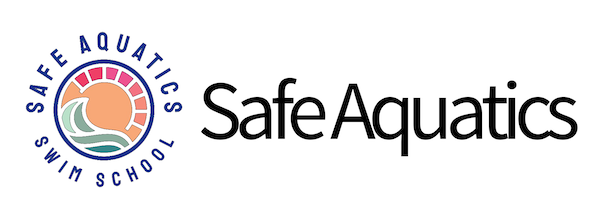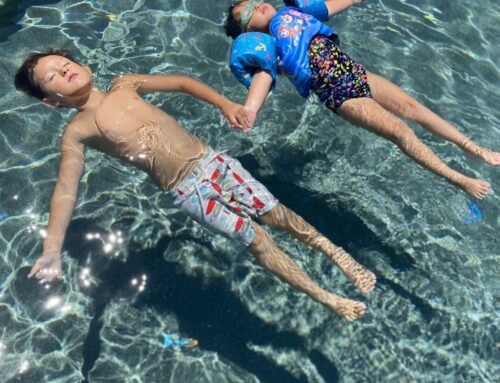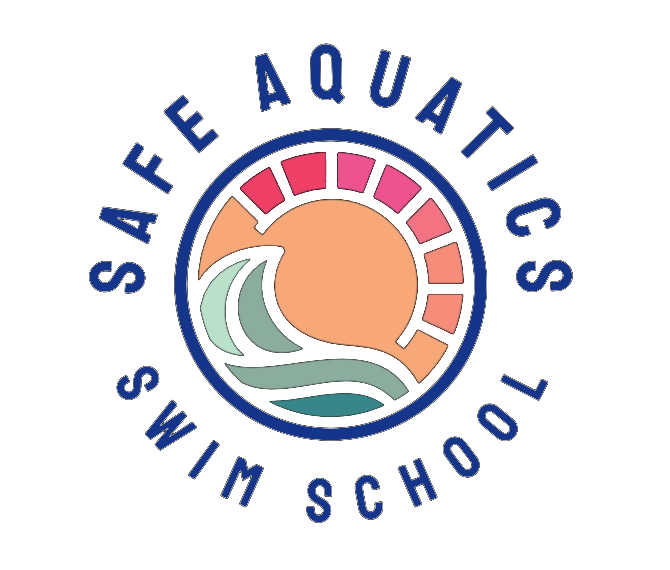One of the most common challenges we face at Safe Aquatics is teaching a good skill progression when swimmers have learned doggy paddle as their main swimming skill and it’s become a habit.
Because doggy paddle is so widely taught and easy to learn, it can become an issue for many swimmers. We regularly see new swimmers and more experienced swimmers who rely on doggy paddle!
So why is it such a big deal if it’s easy to learn and so many other swim schools teach doggy paddle as a skill? In this article we will look at the pitfalls of relying on doggy paddle, and learn how to fix it!
Heads up!
The main disadvantage of doggy paddle is that it is very inefficient. It allows you to keep your head above the water, but forces you to expend lots of energy using your arms and legs to keep your head up. It is not a good skill for swimming recreationally as you will become exhausted much more quickly than you would if you learned to hold your breath and put your face in the water. This may seem counterintuitive, but it’s true… the paddling motion will tire your arms out rapidly while giving you very little in the way of speed or mobility in the water. If you become exhausted, then you may no longer be able to keep your head above the water. If you’re unable to rotate to your back and continue swimming on your back, this can put you in a dangerous position.
Legwork
A big misconception in swimming is that arms are more important overall than legs. The truth is that our legs are stronger than our arms, and are used to stablize the body so that the arms can work optimally. Good swim technique involves a powerful, controlled kick working together with the arms. For beginners learning to swim, kick will be the best way to increase speed until they are able to learn proper arm technique. This is true in kids especially, as most kids need to develop upper body strength and coordination, and then learn proper body position before learning efficient arm technique.
With doggy paddle, you won’t be able to take advantage of a good kick! In the water, the body will behave like a see-saw. If your head is lifted up out of the water, this will cause the opposite to occur on the other side of your body, and your legs will sink. Your kick won’t be as effective because it will be tilted downward. Most of the power in your legs will be used to push your head and your chest up, rather than pushing you forward through the water. Again, this will lead to eventual exhaustion with minimal speed or forward mobility. Rather than gliding through the water, you’ll be fighting against it.
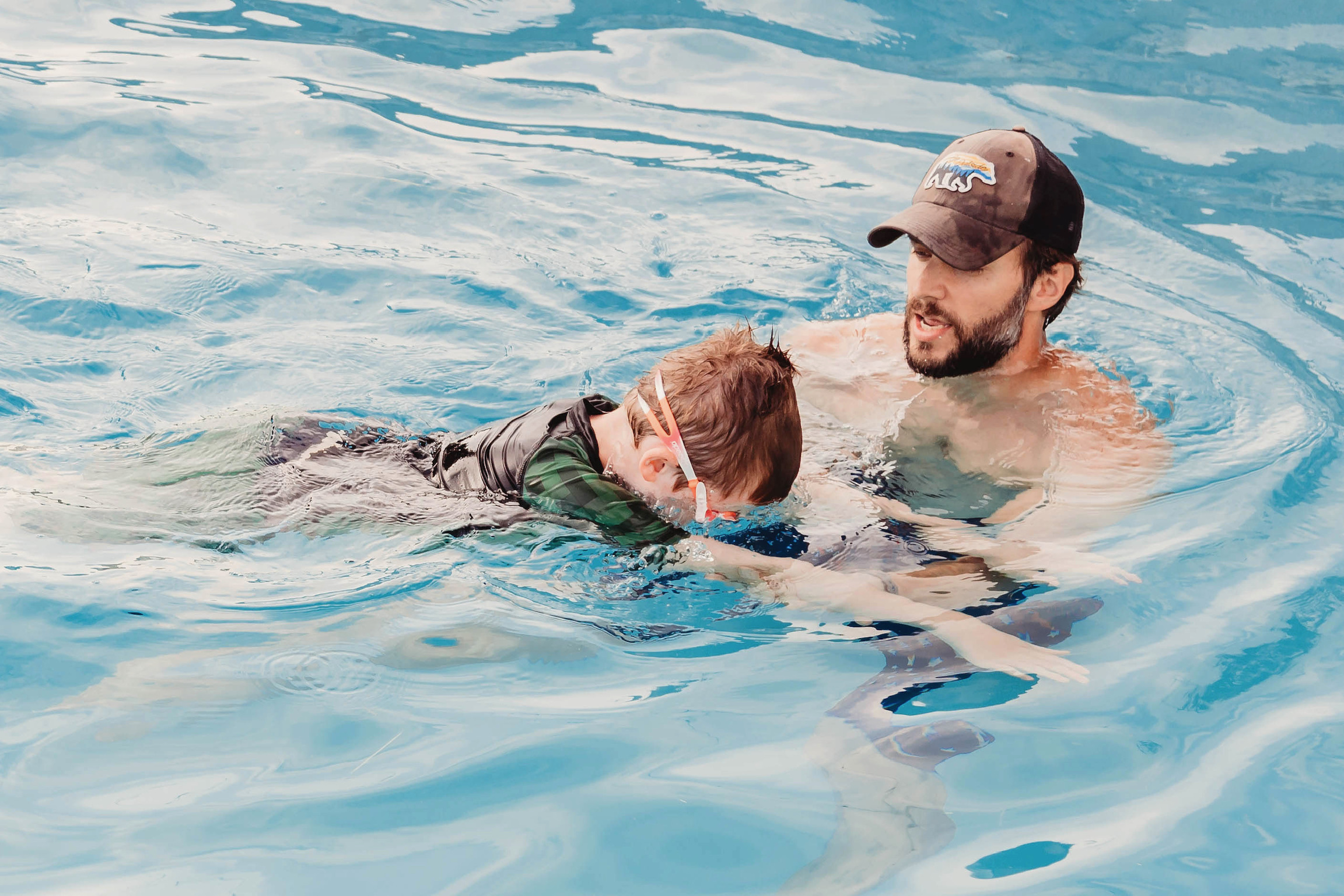
Bad habits die hard
Because it’s so easy to learn, most swimmers who begin doggy paddling will turn it into a habit quickly. They will struggle with putting their face in, submerging their ears, rotating their body position, kicking on top of the water, or allowing their arms to glide (and rest).
All of these issues can add up and make it difficult to progress past the skill of doggy paddle. Sometimes you will see adults who have been swimming for many years struggling to do anything more than a doggy paddle motion when in the water.
It’s very important to teach swimmers good fundamentals in order to improve their skills, but when they subconsciously know their doggy paddle will keep them above the water, then learning those more difficult skills becomes daunting and the swimmer will default to doggy paddling without even thinking about it. Their arms, legs and head will learn the pattern of doggy paddle and develop a muscle memory which takes a lot of time and repetition to break. This can become very frustrating for the swimmer because it will feel like they are taking a step backwards in order to go forwards!
Locked up
This process of un-learning habits can be especially difficult for swimmers with a lot of experience, but who have built the doggy paddle habit.
People will sometimes have a desire to learn proper freestyle later in life, and will run into a few problems in shifting from doggy paddle movements to a face down position. As previously mentioned, they will be used to having a kick that is low in the water and tilted towards the bottom. Freestyle needs a kick that is just below the surface of the water and generating forward motion. To make this possible, the head and shoulders must be level with the feet, at the surface of the water. With a doggy paddle habit, the swimmer will have an urge to drop their legs and lift the head up.
Breathing in freestyle occurs on the sides. The body rotates around the neck and head and the head turns to the side, still partially submerged. When the breath occurs, one side of the head should still be laying on the surface of the water and the kick and shoulders should remain level. This will be difficult for a swimmer with a doggy paddle habit, as they will feel an urge to lift their head up to breathe.
Another function of the the body rotation mentioned above is to allow proper arm movement. In freestyle, the bottom arm “reaches”; extended out in front of the swimmer, close to the surface of the water. During rotation, the bottom arm and hand will catch the water and pull it down towards the hip, generating forward motion. The top arm performs a “recovery”; it comes out of the water by the hip and extends, returning to the front where it submerges again.
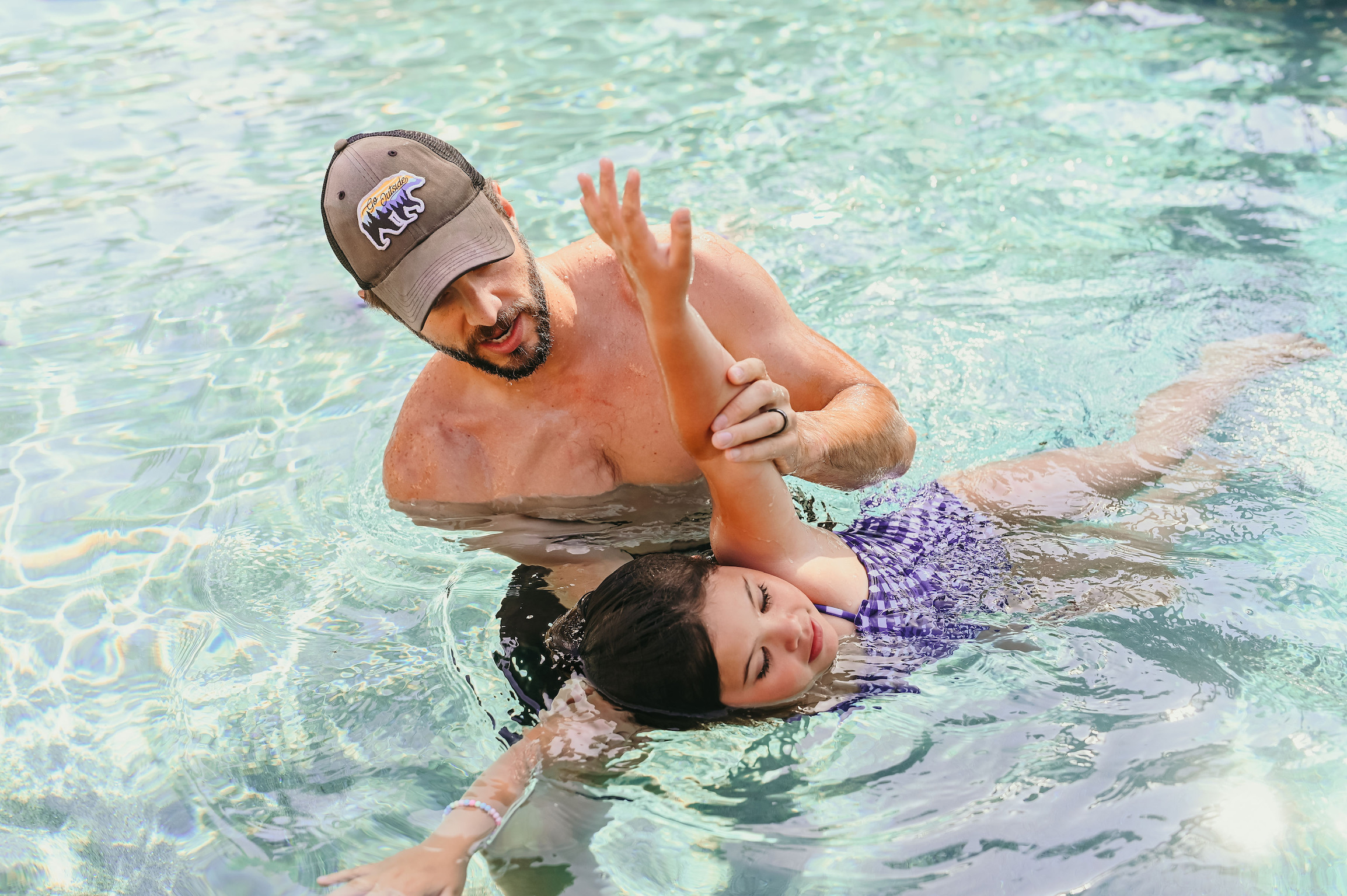
Swimmers with a doggy paddle habit will have difficulty not just in the rotation of the body, but in the reach, pull and recovery of the arms as well. Their arms will habitually want to push water down towards the bottom of the pool to push the head and shoulders up out of the water. They will have mostly upward motion instead of forward motion.
Because doggy paddle requires such a large amount of rapid exertion, it tends to make swimmers stiff and rigid in the water. Proper freestyle should be smooth and rely on a rhythmic, relaxed glide between pulls. A habit of doggy paddle will interfere with this and the swimmer will feel as though he or she is fighting against the water rather than gliding through it.
Putting it all together
Many people consider doggy paddle to be “good enough” for their recreational purposes, and don’t see the point of learning proper technique because they don’t intend to improve past that point. As we explained, this can be a misguided belief because doggy paddle is inefficient, will lead to quick exhaustion, and can be unsafe because it is not an effective self-rescue technique.
On the other hand, there are many parents who want to empower their kids with a deeper swimming skill set, which can create competitive athletic opportunities and team experiences for them later in their life. It’s also a great way to stay in shape and build endurance and cardiovascular fitness. In order to set kids up for improvement and give them a clear path to success, it’s very important to establish strong fundamentals and turn those into habits instead of doggy paddle.
For this reason, back float, rotation, and kicking on top of the water with face down are much better habits. After water safety, building these skills are the first steps we take towards technique at Safe Aquatics.
Hopefully, this article has given you a better understanding of doggy paddle and its drawbacks. If you or your child learned doggy paddle and already made it a habit, don’t worry. At Safe Aquatics we are very experienced with this issue know how to tackle it in many different ways, making necessary progress while being sure to keep things fun and positive!


